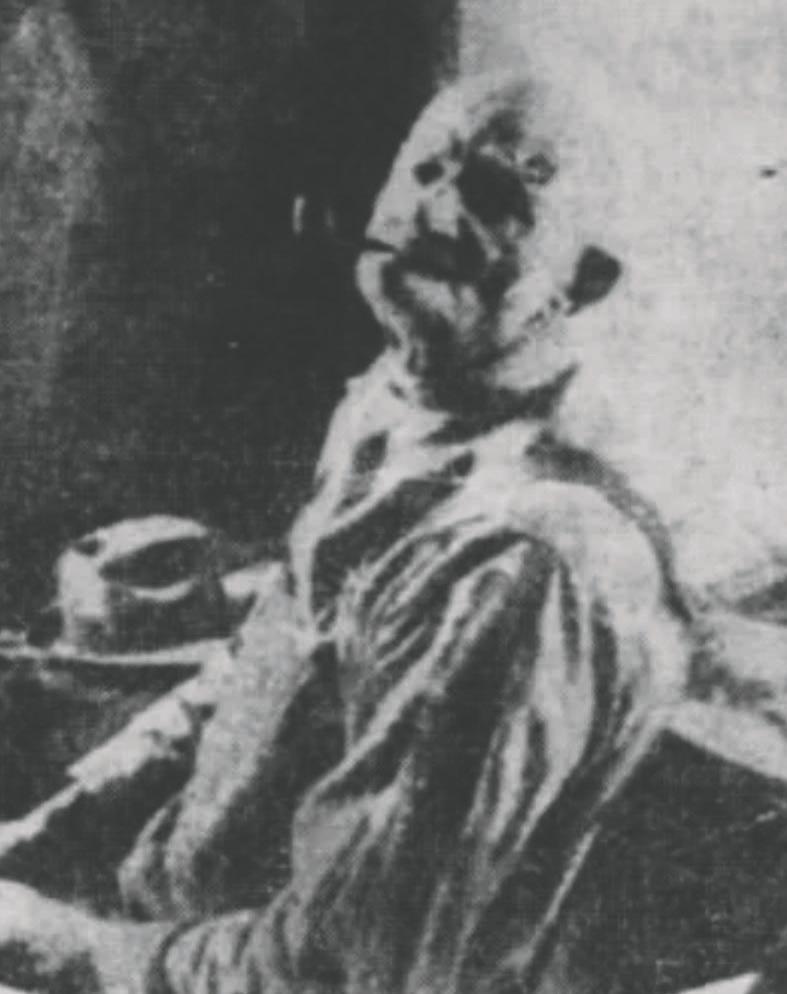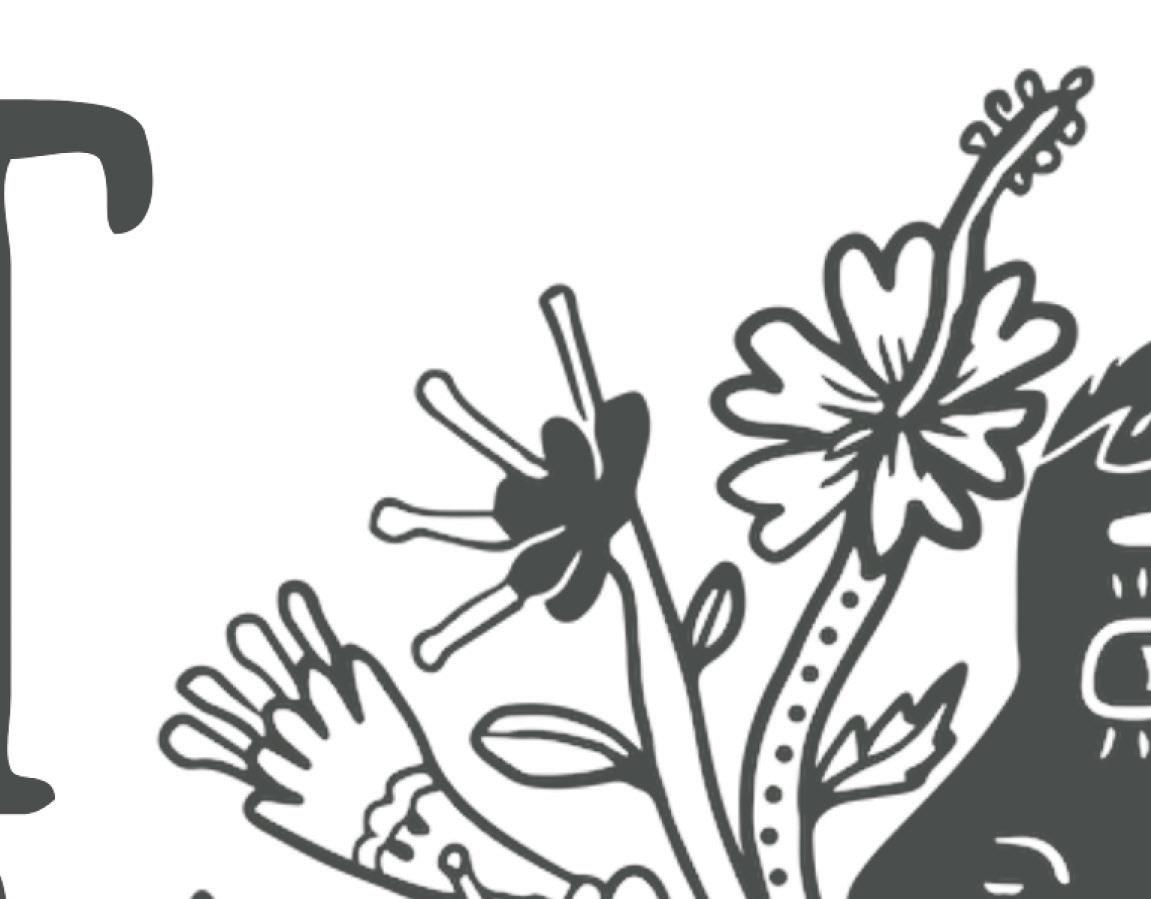
8 minute read
Brain DUMP
by The Comet
THE COMET brain dump: pomp and circumstance
by KRISTEN ACESTA
Advertisement
I was all for Law & Order: UK edition… until they got to the courtroom, when I realized they still wear wigs (also called a peruke btw). But for reals, grown adults with law degrees still wear wigs in England.
Not to continue bashing on the Brits, but I was listening to The Astrology Podcast not too long ago on the nation’s birth chart, it’s capricorn sun, and how they hold on to traditions. “It makes sense in a way” Tony was explaining “the tradition of the royal family is merely a representation of everything the British value. Not necessarily a productive totem, but useful nonetheless.” That was paraphrased by the way. Tony is too nice to directly jab. But it brings me to the point of ritual. I grew up in a home where we celebrated Christmas because people wanted presents and all other holidays were hearsay. We had no traditions to speak of and the materialistic nature of it all had me detesting anything to do with ritual, formality, and the like. Not only that, but my skeptical nature made sure to point out the *obvious* fact that charades and dance, no matter the intention, are still just psychological stages to mask the wizard behind the veil. AKA, they aren’t doing anything. It’s all in your head.
We see rules and regulations around this in both directions through various religions. Christianity tells you that it’s idolatry to put too much energy and praise into/ onto anything that isn’t God. Things like rosary beads, Jesus statues, and dare I say crosses can be considered idolatry if one is worshiping the piece of materialistic wood more than its intended representation.
Many Buddhists sects have opposite rituals of encouraging people to purposefully transfer energy, emotions, and thoughts onto materialistic objects. Things like the “weeping monk” (one of my favorite statues by the local Greenman Stone) that is supposed to represent a physical transference of grief and sorrow onto the rock itself so that you don’t have to hold onto it. Let’s not delve too deep into religious crosshairs though. We all know where that leads. The point of the examples is to demonstrate the human capacity to empower, process, and transform material objects as something special, that can then be used by the same individual to in turn empower, process, and transform themselves (good or bad depending your angle). Did you get that? Let me give a better example:
Pinrolled wigs give a bunch of English (mostly) white males with a lineage of colonizing the world, a sense of power. It only gives them power because they all partake in the ritual of wearing it, only when in a position that normally fosters empowerment, like in the courtroom. They also believe in it. Just like they believe in the royal family, and what they represent.
Nevertheless, this article is actually supposed to be positive. Yeah I know, give me a break, I’m working on it.
So here’s the twist. You can create your own rituals. Want to do better in that job interview you got coming up? Then wear your lucky coat. Don’t have a lucky coat? Go make one. Don’t want to make one? Then pick up that nasty piece of dirty laundry in your corner and claim that as the lucky guy. The irony! It really doesn’t matter because it’s all in your head. And it’s so powerfully effective because it’s all in your head!
You know what the royal family means? Absolutely nothing. They literally are a bunch of rich overly privileged white aristocrats that don’t have actual jobs. If you don’t believe me, watch any British documentary on them. And yet, they *do* mean something to the Brits. They are a source of pride, hope, honor, etc. that seemingly is reflected back to its people. So what are your rituals? Where do you place your power so it’s easily viewed and reflected back to you? Maybe wearing a wig gives you that wonder woman vibe. Or rocking a vest, tie, and overgrown sideburns brings a sense of self (Ron). Perhaps all those crystals you got in your window remind you to speak your truth, and the incense you’re smoking your neighbors out with is somehow cleansing your apartment. Who gives a sh*t because it’s not their ritual, it’s yours. So own it. C










THE FUNNY PAGES
Comics by Dan McConnell

COMICS AND NOVELTIES




POPEYE’S origins
and the WENATCHEE CONNECTION
BY RON EVANS Did you know Popeye was based on a real life man? Did you also know that one of the original and most celebrated Popeye illustrators was born in Wenatchee? Tis a tale many folks don’t go a-knowin’. So I’ll go a blowin’. So to speak.
Popeye’s creator E.C. Segar based the comic character off of what many people have called the real life one-eyed, brawling, swaggerin’, mumblecussing, pipe-smoker named Frank “Rocky” Fiegel. Although, Fiegel was not a sailor, and there’s no sign that he was fond of spinach. Whiskey was another matter as Rocky was often spotted at one end of a local bar or another.
In the early 1900s, Rocky was a well known character around Segar’s hometown of Chester, Illinois, mostly for being a good fi ghter and having seemingly superhuman strength. As legends go, anyway. At one point Segar had made some sketches of the ol’ boy just for fun, and these would later end up as the basis for Popeye the Sailor Man.
While Segar was working at King Features Syndicate, he began drawing Thimble Theatre for the New York Journal. The strip made its debut on December 19, 1919 and featured a myriad of wacky characters, including a man named Castor Oyl and his younger sister Olive. It wasn’t until about a decade into the strip’s run that Castor needed to hire a sailor to navigate his ship to Dice Island. They picked up a scrappy, wise-crackin’ seaman named Popeye to do just that. The character was so popular that he became a main fi xture in Thimble Theatre and eventually the strip was renamed Popeye.
Sadly, Segar died of leukemia at the age of 43 but his fl agship character had become so popular that it was being carried in newspapers and magazines all over the country so new artists were needed to keep the fl ame alive.
Enter Bud Sagendorf. Born in Wenatchee in 1915, Sagendorf soon moved with his family to California where he began an interest in cartooning and illustration at a very young age. When he was a teenager, Sagendorf got his fi rst professional cartooning gig as E.C. Segar’s assistant. He spent most of his time writing and drawing for Thimble Theatre and was especially crucial in the development of the character Popeye. Upon Segar’s death, Sagendorf took over those duties full time and ushered Popeye from strip to comic book and eventually animated shorts, toys and fi lms.
Sagendorf passed away in 1994 at the age of 79 and his legacy bears out that the story of Popeye as we know could not have happened without the involvement of this Wenatchee native. Known as the Carl Barks of Popeye - he wasn’t the only man to ever write and draw the Popeye strips and comics - but he’s regarded by most fans and historians alike as the greatest and most infl uential of them all.

As for Rocky, he lived to be an older man than many would have guessed with his hard-drinking, hard-fi ghting ways. But before he passed away in 1947 he was made aware that he’d inspired one of the most famous cartoon characters of all time, which he found amusing. As Rocky’s story became more well known in the mid1990s a group of superfans organized a fundraiser to add Popeye to his gravestone with the caption “Inspiration For Popeye The Sailor Man.” An amazing legacy for a man who by all counts simply ‘was what he was and that’s all that he was.’














